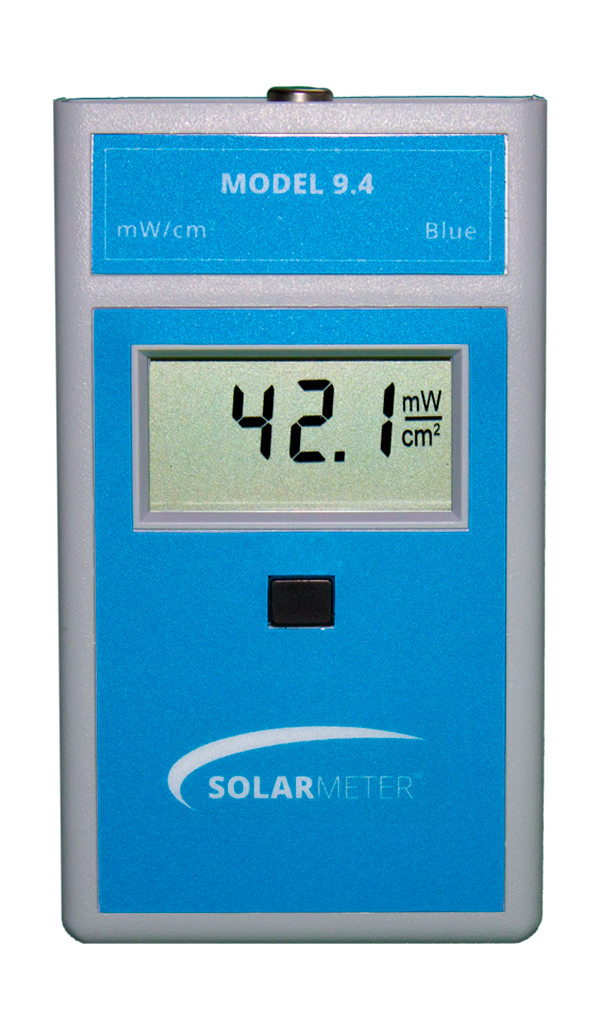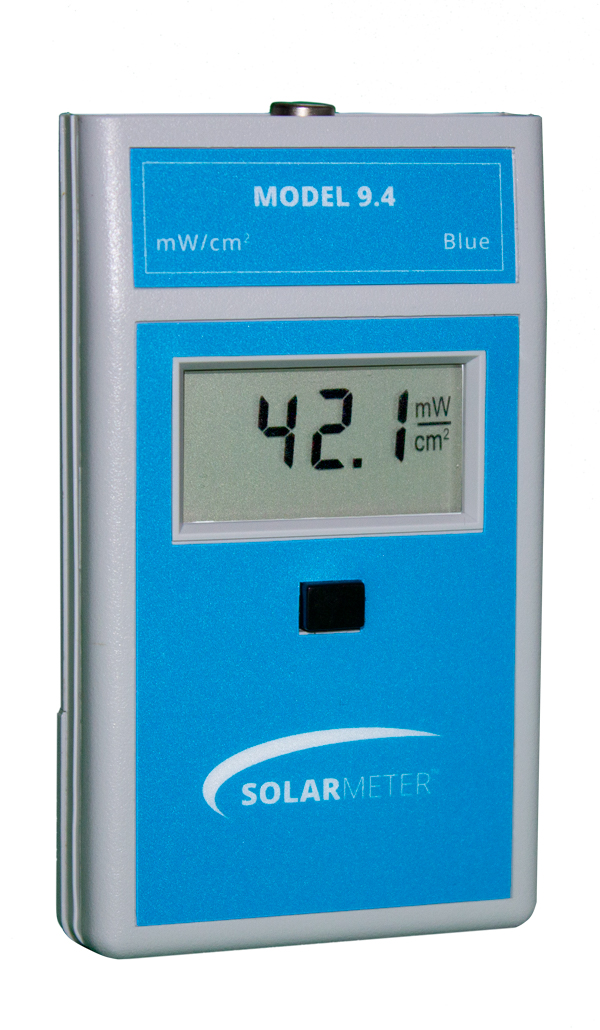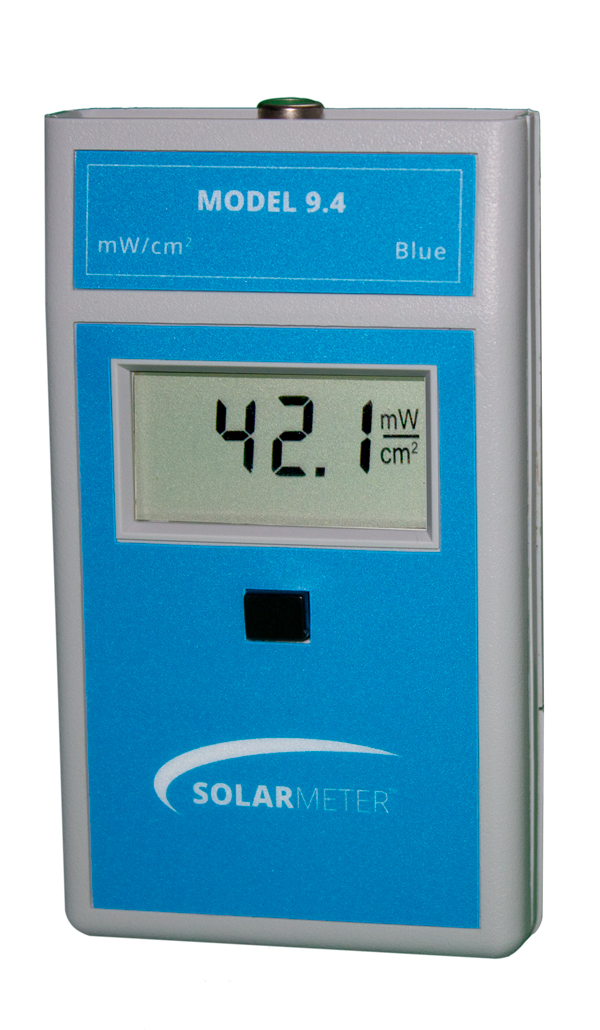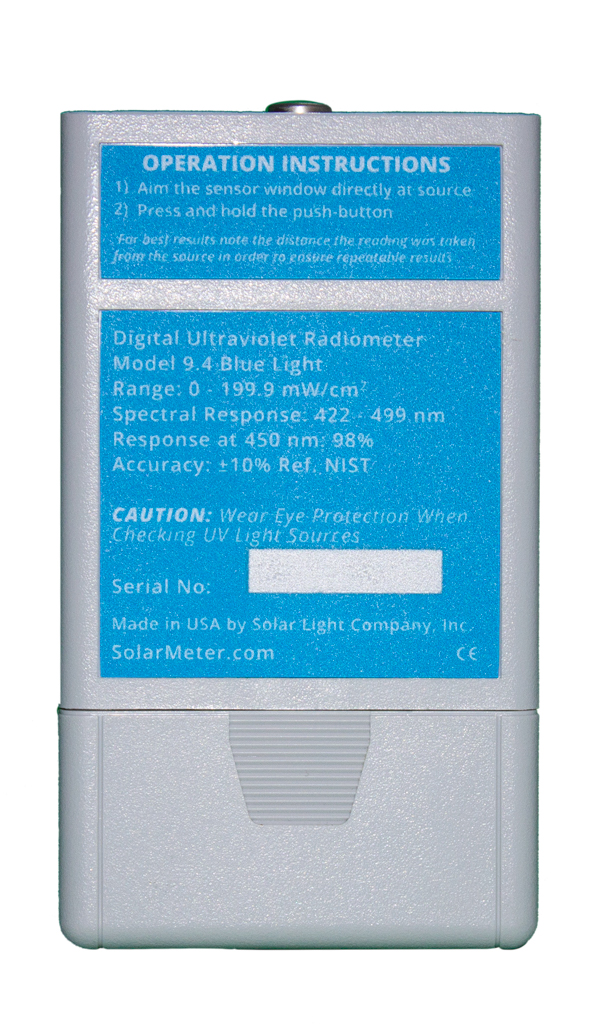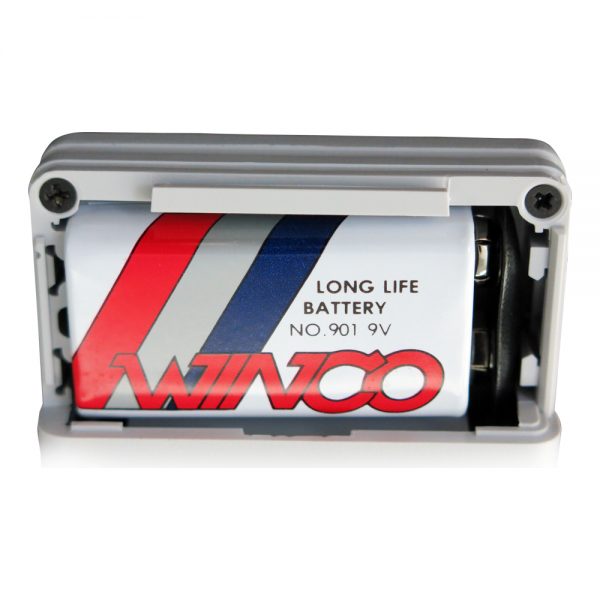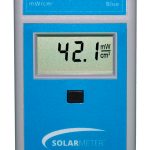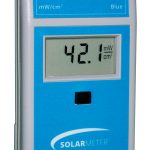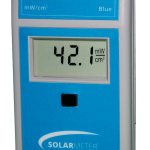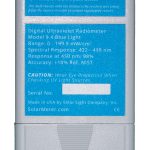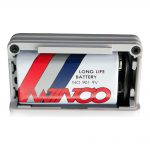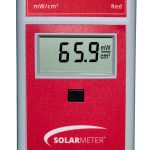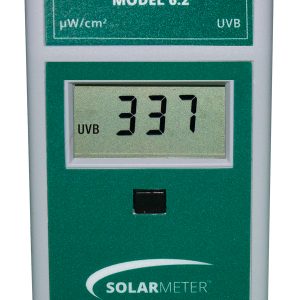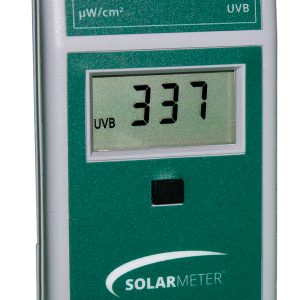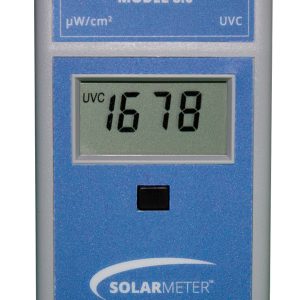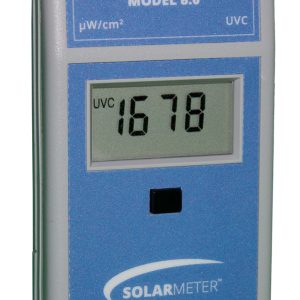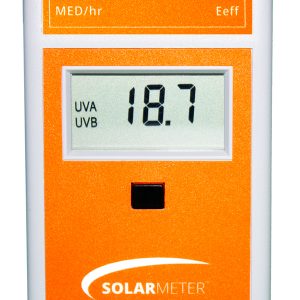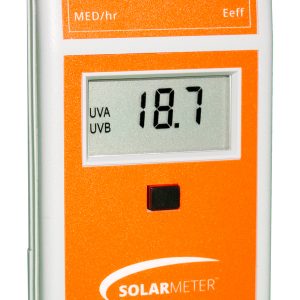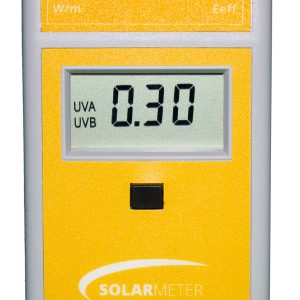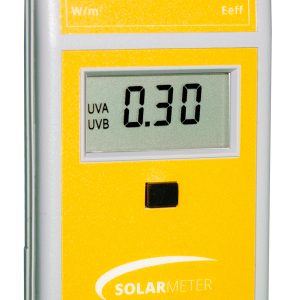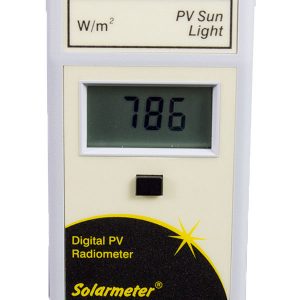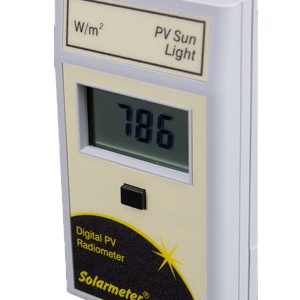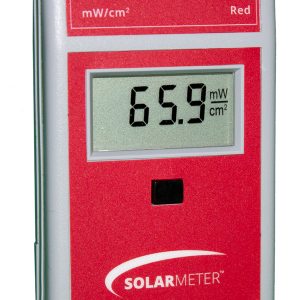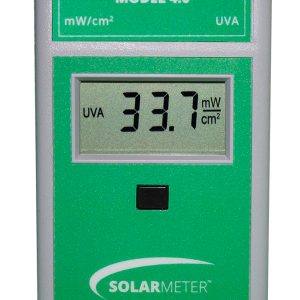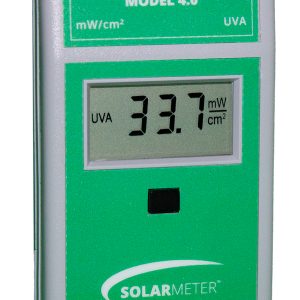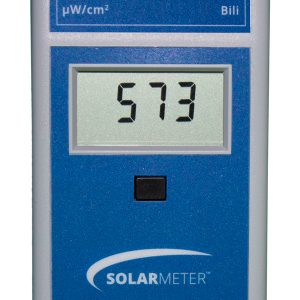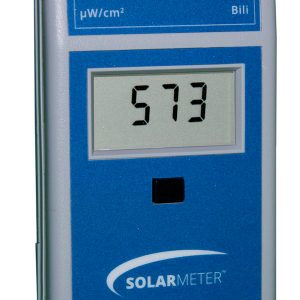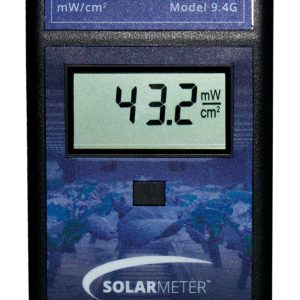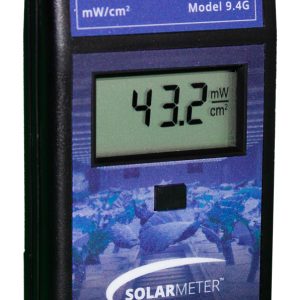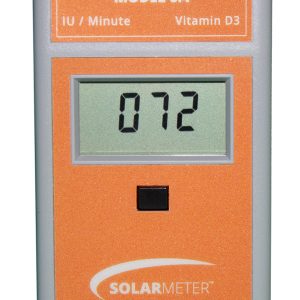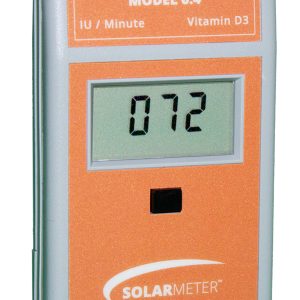Solarmeter® Model 9.4 Visible Blue Light Meter
$249.00
Features:
- Compact, Handheld, and Durable
- Simple Single-Button Operation
- NIST Traceable Accuracy
- LCD Display
- Made In USA
Applications:
- Monitoring Bilirubin Light Intensity and Aging
- Monitoring Blue Light / LED Intensity and Aging
- Monitoring Aquarium Lamp Intensity and Aging
- Monitoring Acne Lamp Intensity and Aging
- Measuring Photosynthetic Action Spectrum Blue Band
- Measuring Outdoor Blue Light
- Testing Eyewear Actinic Blocking Capbilities
- Description
- Additional information
- Videos
- Downloads
Description
| Solarmeter® Specifications | |
| Model | 9.4 |
| Irradiation Range | 0-199.9 mW/cm² |
| Response at 450 nm | 98% |
| Bandwidth | 422-499 nm |
| Resolution | 0.1 mW/cm² |
| Conversion Rate | 3.0 Readings/Sec |
| Display | 3.5 Digit LCD |
| Digit Size | 0.4 (in) / 10.2 (mm) high |
| Operational Temperature | 32°F to100°F / 0°C to 37.8°C |
| Operational Humidity | 5% to 90% RH |
| Accuracy | ±10% REF.NIST |
| Dimensions |
4.2L x 2.4W x 0.9D (in) / 106.7L x 61W x 22.9D (mm) |
| Weight | 4.5 oz / 128 (g) Including Battery |
| Power Source | 9-Volt DC Battery |
| Lens | UV Glass |
| Diffuser | Teflon |
| Detector | GaP with filter |
| Agency Approval | CE Mark |
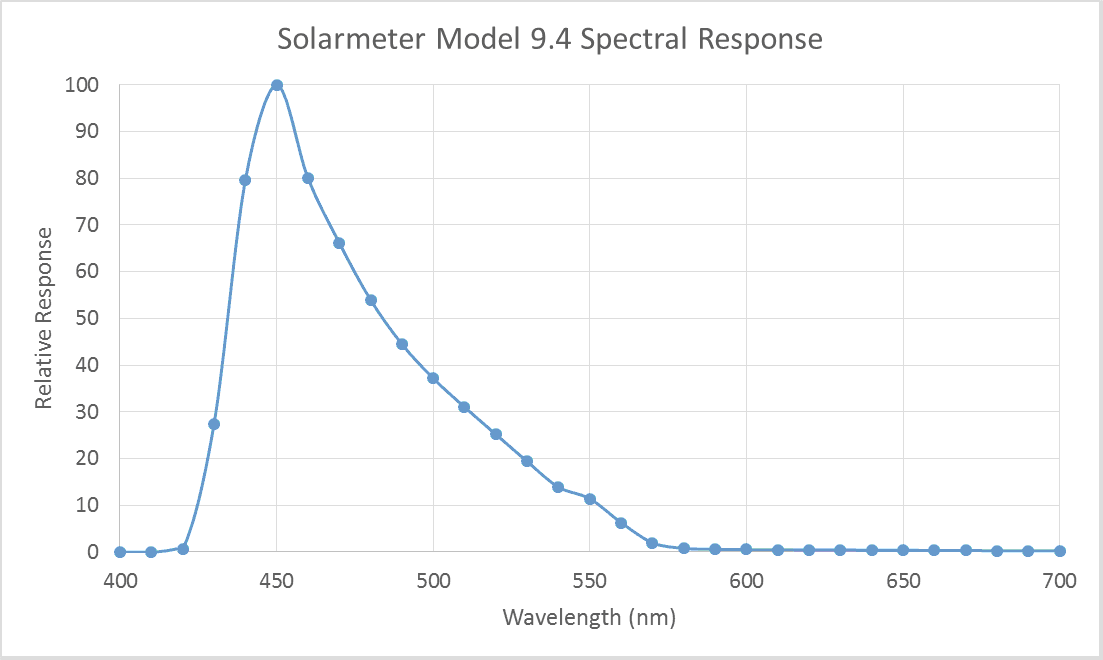
Sensor/Detector
GaP Photodiode packaged in hermetically sealed UV glass window cap. Filter used to narrow response as shown on the spectral response graph.
Operation
To operate your Solarmeter, aim the sensor window located on the top panel of the meter directly at a source. Press and hold the push-button switch on the face of the meter. For best results take note of the distance the reading was taken from the source in order to ensure repeatable results. Battery operation voltage is viable from 9V down to 6.5V. Below 6.5V, the numbers on the LCD display will begin to dim, indicating the need for battery replacement. Under typical service load, a standard 9V battery will last approximately 2 years.
Proper Usage of Solarmeter® Ultraviolet Radiometer
- Wear actinic eye protection when checking blue lamps.
- Allow lamps to warm-up prior to taking readings (at least 5 min).
- Hold meter integral sensor close to source to measure individual lamp or LED intensity. Hold sensor at working distance from source for effective intensity.
- When checking aging of lamps, keep measuring distance and locations constant.
- Lamps should be replaced when output drops to about 70% of their original (new) readings.
- If unsure of what new values were, replace a lamp with new one and compare old one.
- Do not subject the meter to extremes in temperature, humidity, shock or dust.
- Use a dry, soft cloth to clean the intrument. Keep sensor free of oil, dirt, etc.
Additional information
| Weight | 0.5 lbs |
|---|---|
| Dimensions | 7 × 3.5 × 2.5 in |
| Sort order |

